Alex Hetherington is an Edinburgh-based artist, writer and curator. His writing includes A Poetic Measurement an essay for the film programme for Ripples on the Pond at GoMA, Glasgow which includes Rosalind Nashashibi, Sarah Forrest, Anne Colvin, Mairi Lafferty, Allison Gibbs, Annabel Nicolson, Lauren Gault, Catherine Street, Anne Marie Copestake and Karen Cunningham. He writes mostly on the subject of moving image, performance and sculpture which has recently included Florian and Michael Quistrebert, Hugo Canoilas, Rose English, Anna Oppermann, Isa Genzken, Michelle Hannah and Kathrin Sonntag. Hetherington is also the founder of Modern Edinburgh Film School which combines moving image, curating, collaboration, publications, talks and critical writing. Here he reviews Ally Wallace’s recent solo show Seaside Modernity which took place on 30 and 31 May 2015 at Rothesay Pavilion, Isle of Bute, Scotland.
This exhibition is a sequence of journeys: points of departure and arrival, presence and absence. The work on display is an exhibition of clusters and parallels, of architectural and spatial details examined: shapes, lines and curves, inside and outside, ‘choreographically’ reported on. It takes account of an observational – in situ – process that seeks to find the essence of its subject: a building, its layers, its sonic vocabulary, and its materials. In combination the building’s surfaces and flow, the movement of people through the space, sound interrupting or contaminating space, voices transported around the building – folding spaces and acoustics. It makes use of the changing environments from entrance to basement to external balcony and conjoining spaces like stairwells, raised platforms and sunken dance floors. It seeks to investigate the data that images – of any kind – transmit (architectural blueprint, sketch, photograph, illustration, medical diagram). It looks at the purposeful uses of the information images hold: subtle evocation, spatial illusion or exacting measurement. And what the viewer ‘draws’ from that information: from precision to emotion. The exhibition is a conscious arrangement – though once that finds an affinity with the improvisational – that suggests a heightened awareness of time spent in a building. An acute vigilance of being alone within a place and letting its multiple synchronised or discordant narratives unfold. The subject of the exhibition isn’t the Pavilion itself but rather the artist’s place within it. The artist’s pursuit has been to find the building as a collaborator, forming or articulating its own language at the end of an ongoing visual conversation.
Ally Wallace works with installation, drawing, painting, sculpture, video and animation in direct response to specific sites, buildings or locations: an architect’s office, science laboratory, or here a seaside Pavilion, dance hall, leisure facility and social hub. He employs these non-gallery spaces to host self-initiated residences and in turn the exhibition of a close scrutiny, the inspection of their subject, materials and purpose.
This exhibition describes the habits of a journey, its lengths and changes from a studio in the East End, to Glasgow Central to Rothesay, Isle of Bute, on road and rail, and then across water, then returning and repeating. This conjoining of pace, time, surface and movement is embedded in the exhibition: lining up the abstract and the figurative, then an absence of figures, then passages of slowness and stillness, then moments of illusion, details close-up and far, the building’s brief and long narratives, its temperature. Held within the exhibition’s entirety is an invite to contemplate, and to relive the memory of the building’s experiences, alongside a mirroring or recollection of the occupying time of Wallace’s experience as its artist-in-residence.
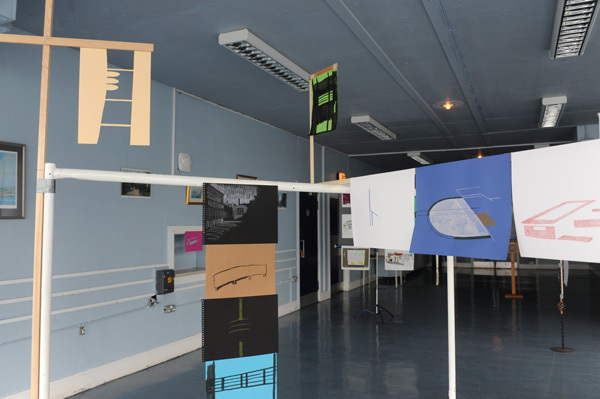
Seaside Modernity Installation view by Ally Wallace
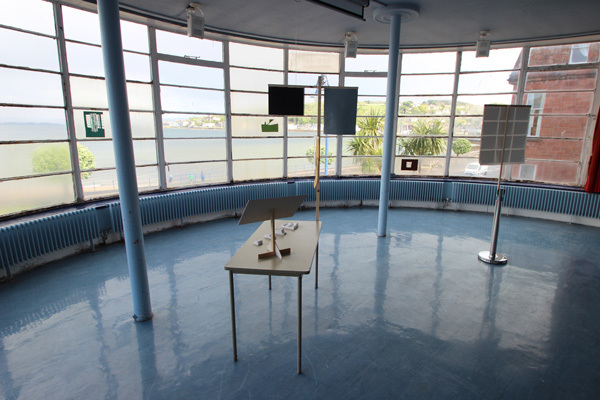
Seaside Modernity Installation view by Ally Wallace
The exhibition’s installation stages an intuitive response, in successive and joining passages, like a poem, diary or home movie. Colour and shapes, small details in pencil, or broader washes appear in interruption and intrusion; displays appear visible and then become invisible. Parts of heating systems, curved plastic warped or melted window panes, doorways or projector screens and decorative velvet rope stands are recruited into the project as rests, tables, frames and props. A lectern for the Society of the Women Citizens of the Isle of Bute becomes an appropriated object, a host for an exhibition text. Close by are marine and military images, reminders of the building’s origins from 1938 and evidence of its slow water sea air rot, its decline – its inherent vice – of the mischief of entropy, flaking, peeling, cracking, falling.
Wallace’s marks and observational processes bring to mind the paintings of Raoul de Keyser, the Belgian artist who died in 2012, and in particular to works like Come on, play it again, nr. 7, 2001, 3 Hoeken III, 1971 and VISP, 1968. Their painted gestures are a description of the lines, decorations, details, hues, colours and surfaces of everyday life. This behaviour that Wallace and de Keyser share finds character in projection screen suspensions, the bringing together of overlapping or exaggerated lines, the highlighting of prominent curvatures, the illumination of small details, the extraction of curiosity and curious features. And in the short-lived exhibition in the Pavilion the line of detail and accuracy flowing from solidity to abstraction, evidence of time spent, of a conscious flow of lived experiences: alert then slow, monotonous, then enthused and sharp and repeated.
These processes and works further bring to mind the work of Toby Paterson, and in particular his installation Ever Growing, Never Old, at The Modern Institute, Glasgow, 2009, and the sculptural works and images Asymmetric Snowflake, 2007 and Inchoate Landscapes, 2011. The isolated object, rendered in detail and in spatial illusion while purposefully engaging with an object’s intention finds resonance with the paintings of Julie Roberts, for example Gynaecology Couch, 2011. The sonic spatial portraits, that are part installation, drawing and sculpture are similar to the works of Trisha Donnelly, in particular her show at Modern Art, Oxford, 2007. While in moving image the Berlin-based experimental works in 16mm film bring to mind Ute Aurand especially In Die Erde Gebait (Building under the Ground), 2008.
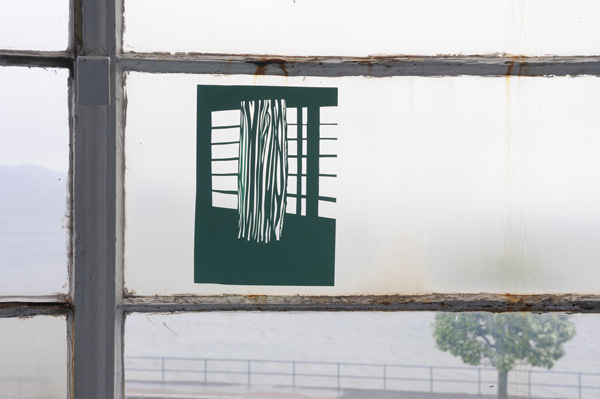
Seaside Modernity detail by Ally Wallace
The building, designed by James Carrick of Ayr and opened in 1938, commencing a new process of restoration is referenced slightly in Wallace’s installation. The Pavilion’s Modernism and relationship to Scottish architectural history and its idiosyncratic placement in the seaside town of Rothesay are further postscripts to Wallace’s residency. These are the silhouette lines that the building is able to articulate anyway. It was designed to give the effect of sunrise, a pleasure building, a destination for Glasgow’s holidaymakers in the International Modernist style. What the artist does is give voice to its unnoticed or nearly unobserved existence: the lines of external hard flat surfaces with soft camp white drapes, the rhythms of techno music that circulates its ancient bones, the swirling air and thud of bullets in its hidden rifle range, the voices that drift like clouds through its halls and passageways and the honeycomb terracotta sinew that bolsters its elegant serenity.
For more from Alex Hetherington, see his current Modern Edinburgh Film School exhibition MOTHS at Summerhall, Edinburgh. Full details on Central Station here.
//////
Find more events in our weekly bulletin here.


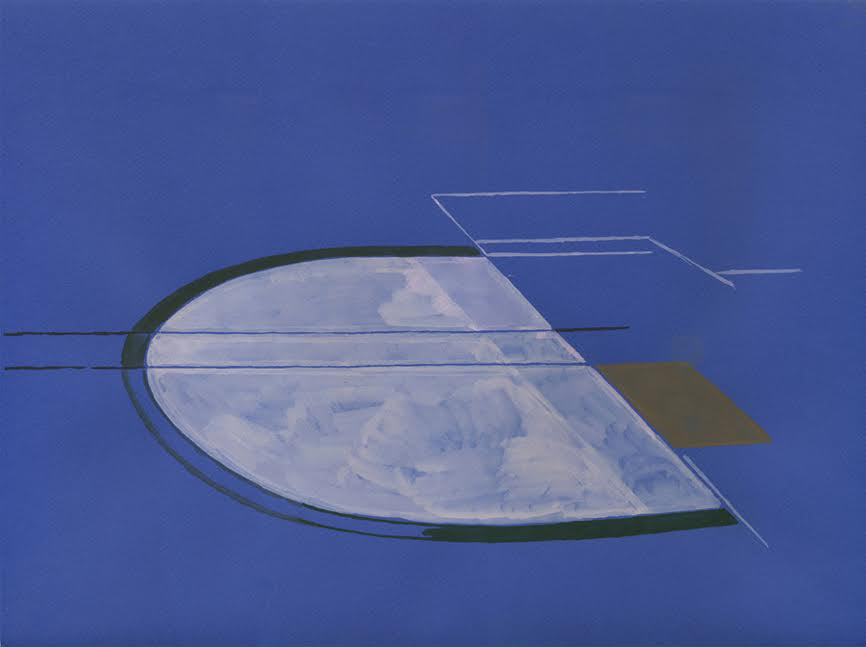
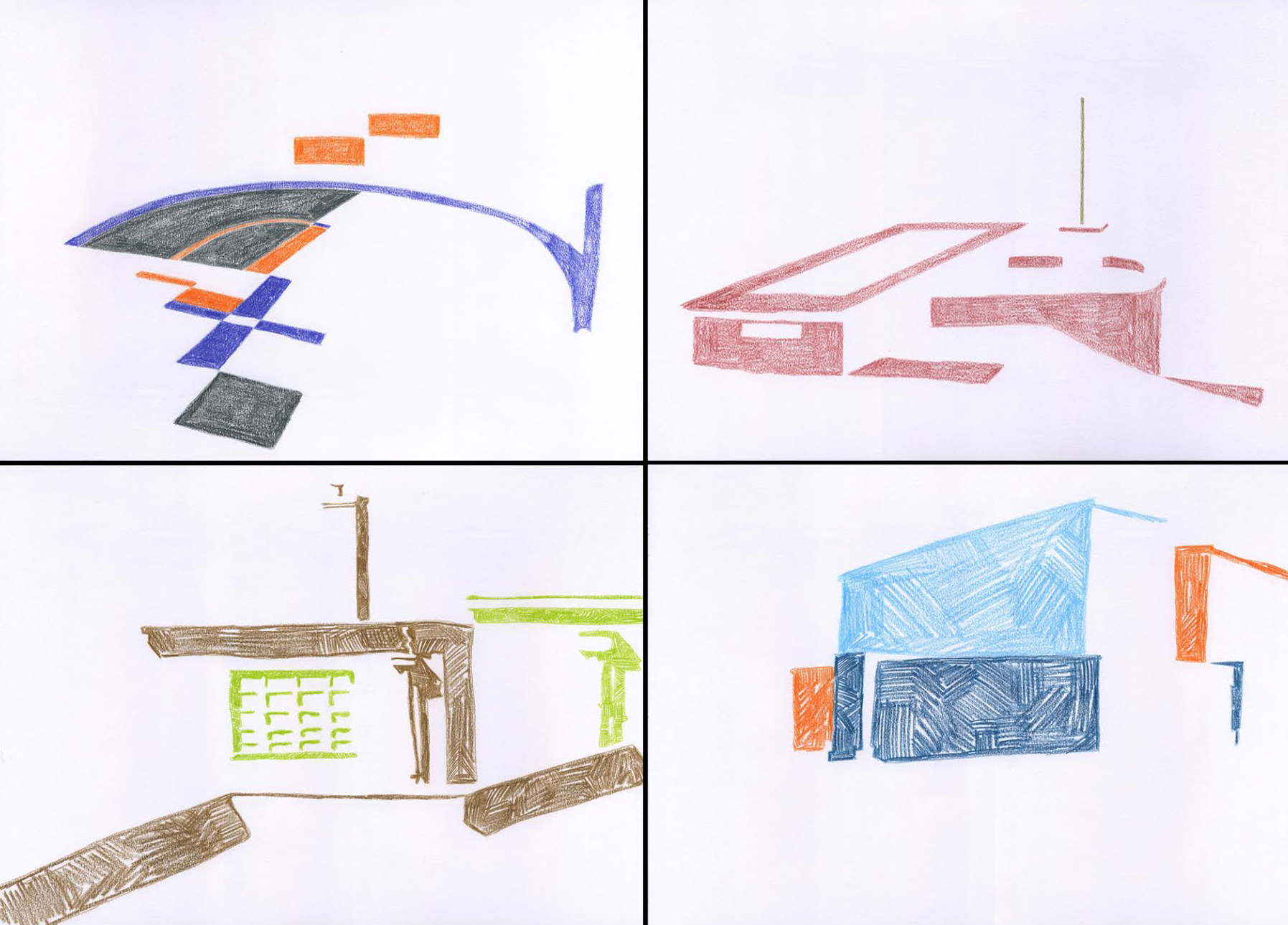

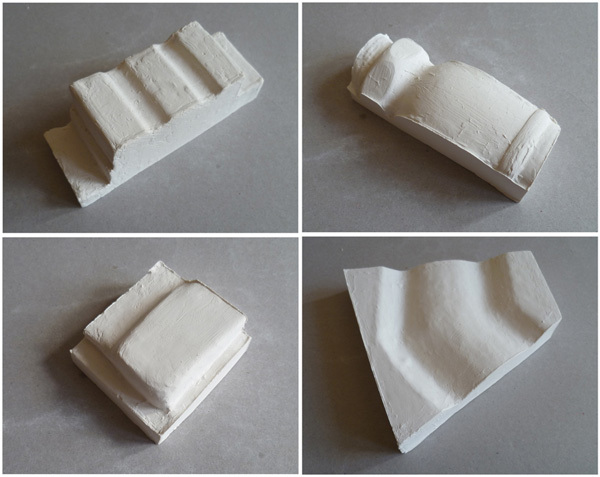
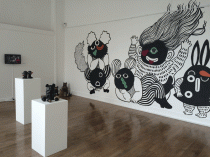

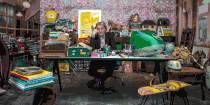









Comments